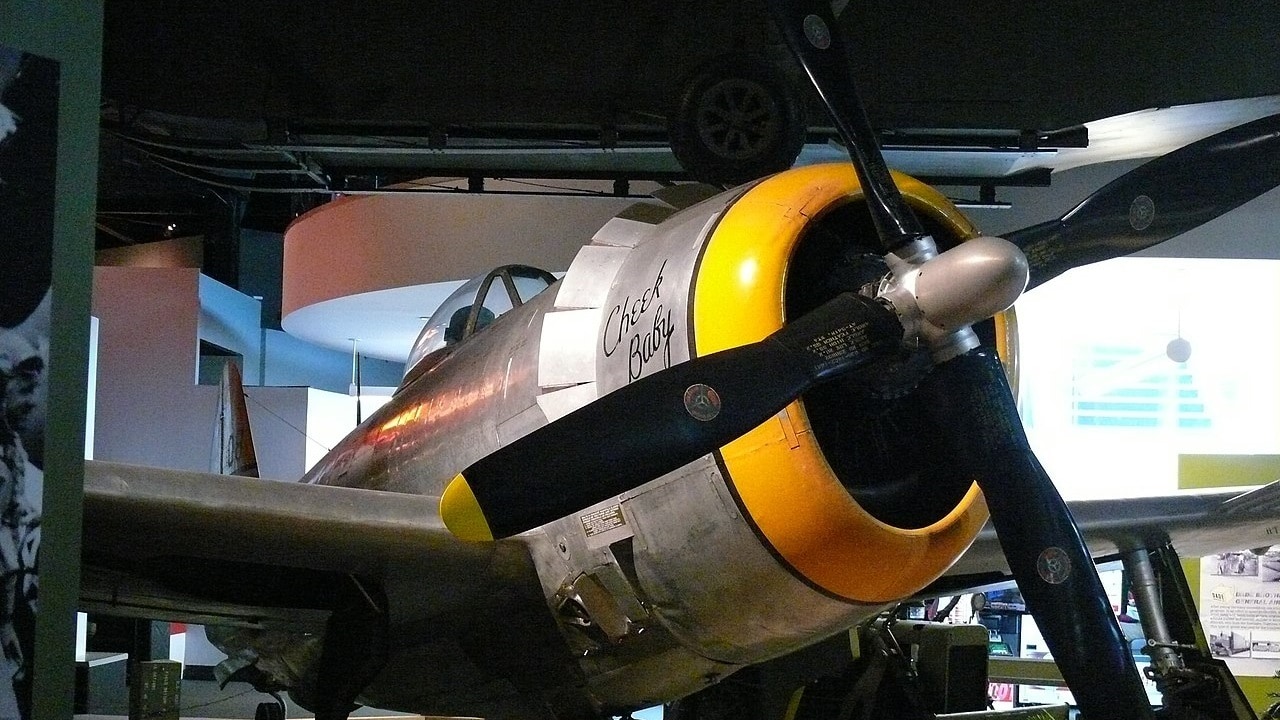The P-47 made World War II history for countless reasons and left its mark on aviation history forever: Before the United States of America entered the Second World War, it eagerly monitored the advances made in military hardware – notably in aviation – and digested the results of the air combat in Europe. In 1940 that led to the development of new aircraft. Among those was the Republic P-47 Thunderbolt.
The company’s chief designer, Alexander Kartveli, went so far as to scrap his existing concepts for what would be a much larger fighter that was equipped with the new R-2800 engine. The result was the heaviest single-engine piston fighter produced during the conflict to reach large-scale service. The aircraft went on to be produced in greater numbers – with some 15,683 being constructed by war’s end – than any other American fighter aircraft.
As with the P-51 Mustang, the P-47 was unique in that it was completely conceived, tested, and put into service entirely during the war years.
Notable Republic P-47 Thunderbolt Facts:
The “Razorback”
The first P-47s were accepted into the United States Army Air Force in late 1941, and the early aircraft are readily identified by their “razorbacks” and framed canopies. That proved to be a weakness, however, as it presented about a 20-degree blindspot behind the cockpit.
Razorback Thunderbolts were built by Republic and Curtiss-Wright and had a dominant role in the USAAF from 1943, first as a fighter and then later as a fighter-bomber over occupied Europe. The early models were also supplied to the Free French Air Force as well as to the Soviet Union.
The 56th Fighter Group was the first to take the P-47 into combat, and it became the top-scoring U.S. fighter group of the war – with more than 674 kills.
The Late War Jug
A common complaint from the early P-47 pilots was that the razorback cockpit limited the rearward visibility. To address this issue, the bubble canopy from a Hawker Typhoon was adapted and that improved visibility considerably.
The aircraft are known as the “bubbletop” Thunderbolts, but the bulky shape of the aircraft led to it is affectionately called “Jug” – based on the bulky shape of the aircraft.
Big and Beefy
Weighing in at 13,358 pounds (6,059 kg), the P-47 prototype was the heaviest single-seat fighter adopted by the USAAF. A fully-loaded P-47D weighted more than two and a half times the weight of a German Messerschmitt Bf 109 and about three times as heavy as the Royal Air Force’s Supermarine Spitfire; while the late model P-47N, with its powerful engine – which helped make it the fast piston-engined fighter in the world – at 20,500 pounds (9,300 kg) was heavier than a bombed-up Dornier Do 17 bomber. In addition, the Thunderbolt’s massive four-bladed propeller had a diameter of 3.76 meters (12 feet, four inches)!
All of that is especially notable as the P-47 was originally conceived as a lightweight fighter, but it was redesignated as the XP-47B to improve its top speed. It was based on Kartveli’s earlier P-44 design and was built around one of the most powerful engines available at the time, the Pratt & Whitney R-2800 18-cylinder, two-row radial. The variant of the engine used in the P-47D model employed water injection to boost performance at altitude.
According to one legend, Kartveli came up with the layout of the aircraft during a meeting in 1940 and drew it on the back of an envelope.
A Lot Were Built: A total of 15,683 Thunderbolts were produced between 1940 and 1945, with more “D” models than any other aircraft sub-type in history. Even though it didn’t make its combat debut until April 1943, the Jugs flew more than 500,000 combat sorties between March 1943 and August 1945. The aircraft served in every theater of the war and performed a variety of missions from bomber escort to close air support. The P-47s could claim nearly 4,000 enemy aircraft, 9,000 trains, 86,000 trucks, and 6,000 armored vehicles as confirmed “victims.”
Redesignated the F-47, the aircraft also remained in service with other nations well into the 1950s, and some were used by the French Air Force in Indochina as dive-bombers, dropping napalm tanks on enemy positions. The Thunderbolt even remained in service in Latin America until the late 1960s – a testament to its striking capabilities.
Now a Senior Editor for 1945, Peter Suciu is a Michigan-based writer who has contributed to more than four dozen magazines, newspapers and websites. He regularly writes about military hardware and is the author of several books on military headgear including A Gallery of Military Headdress, which is available on Amazon.com. Peter is also a Contributing Writer for Forbes.

